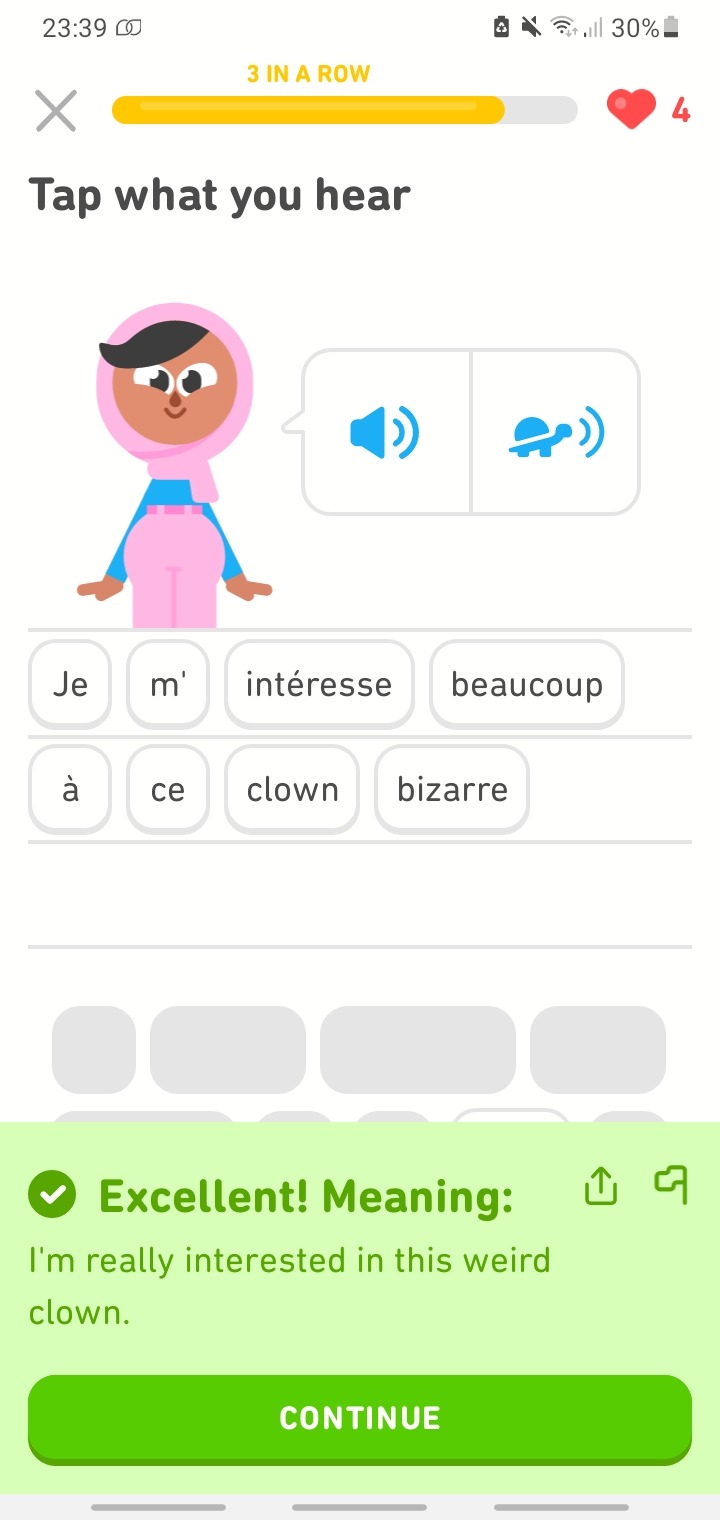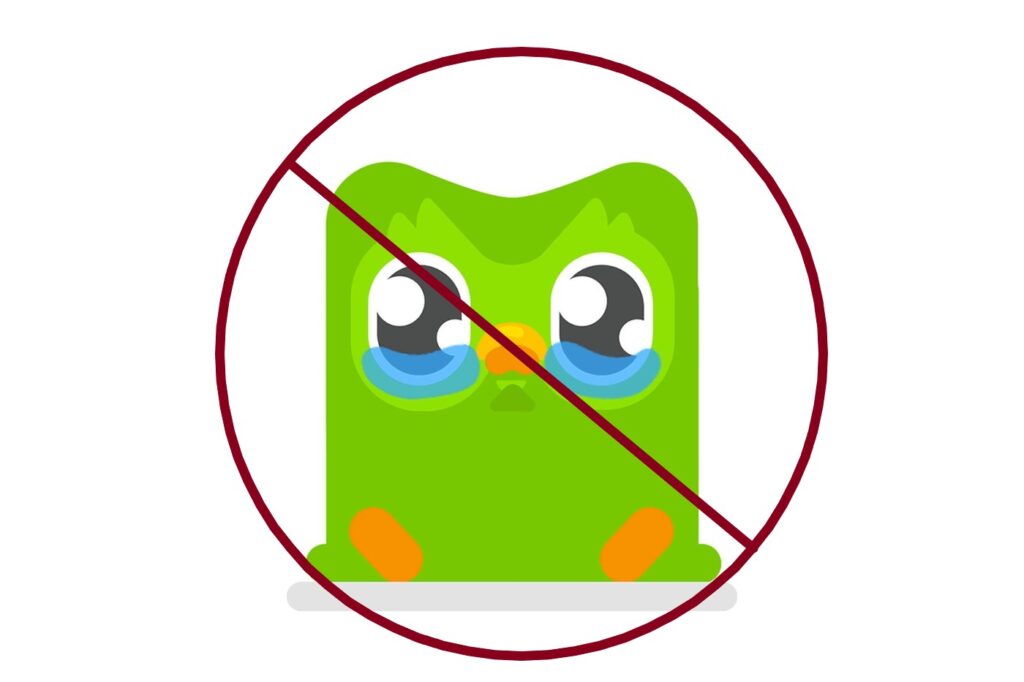It’s impossible to be involved in the language learning community and not hear about Duolingo. It seems everyone who has ever tried to learn a language has used it, and there are many strong options on its effectiveness. I don’t recommend Duolingo not because I think it’s a bad program but because I see people get stuck on it. Duolingo is a fantastic free resource for beginners who are just dipping their feet into language learning and are not sure if they are ready to commit a lot of time to a language. The app is highly accessible and well structured, so it’s easy for complete beginners to follow and build a basic foundation. However, Duolingo is a mental trap made to keep you on the platform even if you’re not really learning anything. There are much more fun and effective ways to learn a language than through Duolingo, and if you want to achieve true proficiency in a language you’ll need to leave it behind.
The problem that often happens with language learning apps like Duolingo is that learners get stuck. Many users treat it like beating a game where they try to rack up as much XP as possible. Duolingo’s strong marketing and comedic threats keep learners coming back every day trying to maintain their learning streak. However, many of these learners aren’t really paying much attention to the lessons themselves. They are filling in the answers based on context or just repeating the same exercise over and over. Duolingo’s lessons focus a lot on repetition, which is great for beginners but lacks the diversity of language more advanced learners need. Many of the sentences used by Duolingo contain completely irrelevant vocabulary and topics that learners don’t really need. It’s much easier to learn language through context and conversations that make sense. Trying to memorize random sentences is unnecessarily difficult and not how we naturally learn language.

I recently decided to try out Duolingo again after not having used it for a few years, and the problems I had with it in the past still exist. Duolingo is decent for memorizing vocabulary, but the sentence-building portion allows you to rely so much on context that you don’t need to know all the words to build a sentence. In real conversation there is no word bank, so this exercise is not very helpful for building listening or speaking skills. I also personally find this type of study monotonous and boring, and I would much rather use other study materials where I can go at my own pace and learn more interesting things. I like to learn through lots of exposure so the lack of dialogue and stories makes Duolingo a poor language course for my learning methods.
So, what should you do if you want to become proficient in your target language? If you’re a more serious learner, I recommend using a textbook for building a solid foundation or at least a program that focuses more on grammar and basic conversation like Spanish Dictionary for Spanish learners or vhs-Lernportal for German learners. If you insist on sticking with Duolingo, make sure you’re getting more language exposure on the side. Duolingo alone won’t teach you a language. Listen to language learning podcasts, read simple articles, and watch TV shows in your target language. Also, make sure you read through all the grammar explanations Duolingo provides you with. Many people skip these and don’t properly grasp the grammar of their target language. Then when you feel like Duolingo is getting too easy and you’re just going through the motions, it’s time to let go. As scary as Duo is, I promise he won’t kidnap you in the middle of the night and force you to continue your lessons. Once you find yourself in greener pasturing using resources you like, you also won’t be tempted by his manipulative tactics.
Once Duo is no longer holding your hand, it’s time to work toward using native sources. Your goal as a language learner should be to do all the things you enjoy doing in English in your target language. The intermediate stage of language learning is always the hardest. You know all the easy words and how to make a simple sentence, but when you try to listen to a native speaker, they speak so fast and use so many words you don’t know it feels like you’ve learned nothing. Bridging this gap is frustrating, but with the right resources, it doesn’t have to be painful. Everyone struggles with this part of their language journey, and if you’re learning a language completely different from your native language it just widens this gap even further. What you need is time and consistency. Spend as much time as you can listening to and reading in your target language so you can get lots of input. Exposure and input are how humans naturally learn language, and with the internet at your fingertips, there are countless fun and interesting resources available, many of which can be found through this website. For more detailed information on how to approach language learning and what free resources you should use, check out my language pathways. Even if you are learning a different language than the ones I have pathways for, the outline for learning a language is still the same. Learning a language should be fun and interesting, not boring and repetitive. With the right tools and the right attitude, learning a language will be one of the best and most memorable journeys you’ve ever taken.





